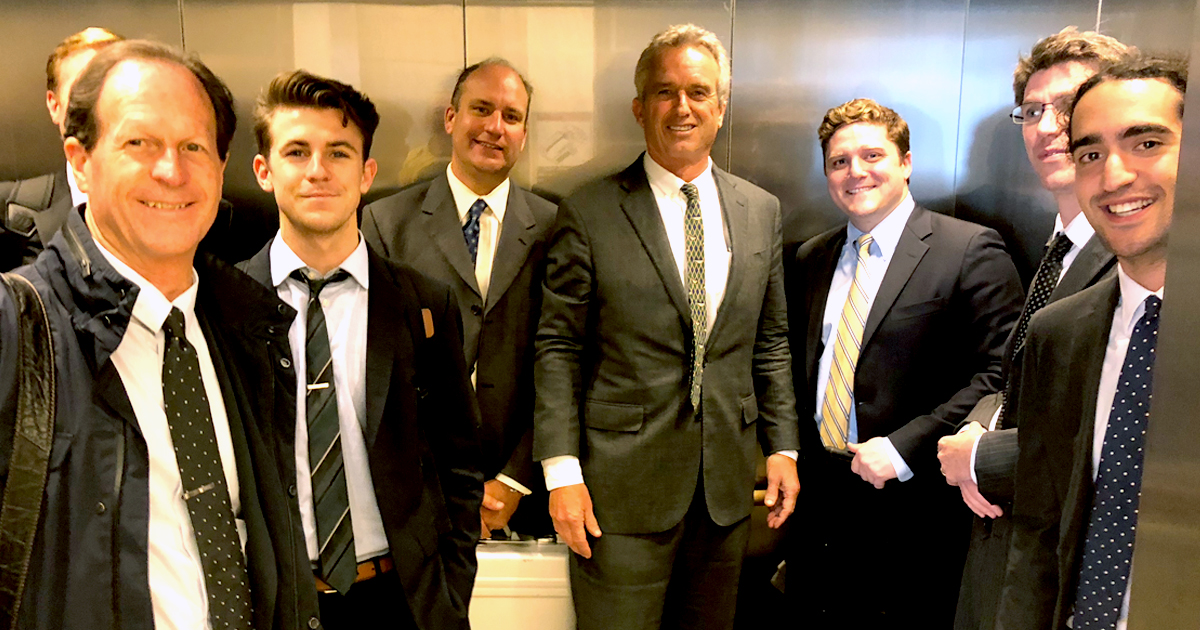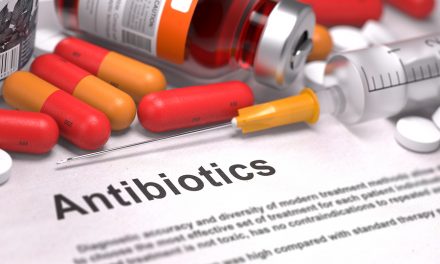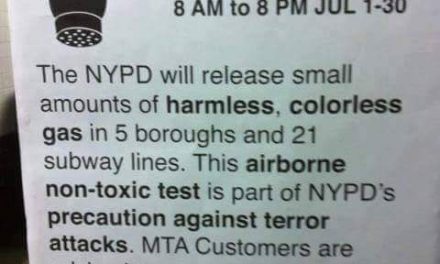Dewayne Johnson v. Monsanto Company is the first Roundup cancer lawsuit to proceed to trial. Plaintiff Dewayne “Lee” Johnson, a 46-year-old former school groundskeeper, alleges exposure to Monsanto’s Roundup weed killer and its active ingredient, glyphosate, caused him to develop non-Hodgkin lymphoma (NHL).
RELATED STORY:
- CNN: He’s dying of cancer. Now, he’s the first patient to go to trial to argue Roundup made him sick
Johnson is one of thousands of plaintiffs to file suit against Monsanto in state court over the alleged link between Roundup and NHL. More than 450 other lawsuits filed in federal court are currently pending in U.S. District Court for the Northern District of California. Since the start of the Johnson trial, Robert F. Kennedy, Jr., co-counsel to Baum Hedlund Aristei & Goldman, has provided running commentary of the events in court each day. Here’s his post for day 13 of the Monsanto trial:
On Friday morning, July 27, day 13 of the Monsanto trial, we called our final live witness in Dewayne Johnson’s case against Monsanto—Dr. Charles Benbrook. Benbrook is an agricultural and toxicology scientist. A Harvard graduate and former executive director of the National Academy of Sciences, Benbrook has been studying the link between glyphosate and non-Hodgkin’s lymphoma since 2000.
Benbrook is part of the team of scientists working with Children’s Environmental Health Network to study the effects of widespread herbicide exposure on children. He explained that “there’s great concern, particularly in the Midwest,” due to Roundup’s increased pervasiveness, and that there had been a “substantial increase in herbicide use [over that period]. There’s [now] over three quarters of a pound of the glyphosate-active ingredient applied on every cropland acre in America if you spread it out equally.”
Benbrook testified that our Monsanto-friendly Environmental Protection Agency’s (EPA) focus on glyphosate alone is a sham intended to gloss over the more important question of “whether the Roundup formulation itself, not just a single ingredient, is toxic and carcinogenic.” He said that Monsanto uses a potent surfactant that dramatically amplifies Roundup’s toxicity.
Benbrook testified that glyphosate is a proven animal carcinogen. My colleague, Brent Wisner of Baum Hedlund Law, delicately asked a series of carefully phrased questions to lead Benbrook through descriptions of some of the 20-odd animal studies linking Roundup to cancer.
In recent days, as described in an earlier post, our side has been dealt a series of harsh rulings by Judge Bolanos, rulings which limited the admissibility of this class of evidence. Monsanto’s attorney, Kirby Griffis, objected forcefully whenever Wisner and Benbrook edged near the red lines drawn by the judge. Despite these interruptions, Benbrook succeeded, if haltingly, in describing Monsanto’s attempts to suppress data on glyphosate’s carcinogenicity.
Benbrook showed that Monsanto had repeatedly killed internal company studies of carcinogenicity. When an EPA-mandated animal study showed clear evidence of glyphosate’s carcinogenicity, the company bullied and bamboozled the EPA to withdraw the study. According to Benbrook, that study showed that “three in 50 of exposed mice were getting kidney tumors following exposure.” When the EPA caved in, it ordered Monsanto to redo the study. Monsanto simply sandbagged the agency, refusing to comply. Eventually, the beleaguered agency backed down completely.
Benbrook pushed back hard on Griffis’ claim that the International Agency for Research on Cancer (IARC) never looked at real-world exposure data before issuing its monograph that glyphosate is a probable human carcinogen. “Heavens no,” Benbrook said laughing at the Monsanto attorney. “The very first section addresses use and exposure!”
Benbrook also eviscerated Monsanto scientist, Dr. William Goldstein’s earlier testimony that the IARC committee “cherry picked the data that they wanted to focus on rather than looking at the broader weight of evidence.” Benbrook explained:
“IARC relies only on scientific studies published in peer-reviewed journals, where all the data is available, the methods are available, the science is transparent, if you will, fully explained. One of the things IARC does… certainly better than any regulatory agency around the world, is really critically evaluate the quality of the individual studies so that they put the most weight on the best studies.”
Benbrook contrasted IARC’s open, transparent protocols with EPA’s dubious practice of relying upon secret, unpublished and not peer-reviewed studies by industry, and upon covert consultations with the regulated company.
RELATED STORY:
Benbrook testified that Lee Johnson’s Roundup exposure exceeded the typical exposure endured by the farmers who were the subjects of Monsanto’s loudly touted Agricultural Health Study. Large-scale farmers are “inside a cab with glass and a sophisticated air filtration system… the [farm] industry’s done a great job of really minimizing exposures for people—with modern equipment,” Benbrook said, while Lee and other non-farm users “use either a backpack sprayer or a hand-held sprayer… kind of like a power washer,” which leak and create aerosols that follow the applicator in a toxic cloud.
Benbrook was a powerful final live witness who reinforced, and tied together, the testimony of the Plaintiff’s five-week parade of expert fact witnesses. Kirby Griffis’ (Monsanto) afternoon cross examination of Benbrook was bootless.
As one of our final treats for the jury, Wisner played videotaped testimony of Steven Gould, Monsanto’s head of sales for the West Coast, who worked closely with product safety chief Dr. Donna Farmer during his time at Monsanto. As the tape played on the courtroom monitor, the jury watched Plaintiff counsel’s Jeff Seldomridge of the Miller Firm catch Gould in embarrassing whoppers so many times during the video depo that the befuddled Gould looked like a nervous wreck by the time the credits rolled.
In his finalé, Gould grudgingly acknowledged trading emails with Greg Fernald, a chief marketer for Roundup’s California distributor, Wilbur-Ellis. Gould complained to Fernald that California school districts were banning the use of Roundup on school grounds.
“It’s hard to understand how against all science and law they can do that—can do this,” Fernald responds. “We are being overrun by liberals and morons, sort of like a zombie movie. So we just have to start taking them out one at a time, starting with the elections next year.”
Gould admitted to Seldomridge that he so admired Fernald’s turn of phrase that he forwarded Fernald’s email to Monsanto’s employees. Unfortunately, since we are before a California jury, Judge Bolanos had us redact out all reference to California, but the video was still effective.
The plaintiff’s trial team closed its case with the videotaped testimony from former Monsanto product salesman, Kirk Azevedo, who joined Monsanto on an idealistic impulse after seeing a speech by Monsanto’s founder, Robert Shapiro. During that talk, Shapiro described his vision of a green, clean and safe future in which Monsanto would make itself an exemplar of good corporate citizenship. Azevedo recalled Shapiro describing his vision for “reducing in-process waste and the factories of the future not being these spewing pollution factories, but, you know being these plants that are going to be green and we can, you know, help, you know, save the world in this regard.”
Azevedo then described a subsequent deflating interaction with a Monsanto senior vice president at a training seminar for the chemical company’s market managers. The V.P. was dismissive, “We don’t know what Robert Shapiro is really talking about here. He’s just kind of this visionary guy. This sort of thing isn’t really what we’re about. We’re about making money, so get that straight.”
We feel that the trial is going our way. Earlier in the morning, Wisner read a stipulation to the jury describing Monsanto’s value, which is relevant to the company’s ability to pay large damages. In June, Monsanto sold itself for $66 billion to Bayer (a German company cut from the same corrupt, manipulating and deceptive cloth as Monsanto). We were disheartened when Judge Ramos cautioned our side against any mention of Monsanto’s $66-billion market value to the jury. Finally, we stipulated with the company’s defense counsel that we would only use the company’s book value; a relatively paltry $6.6 billion. The tradeoff is that we can mention that Monsanto has $3.3 billion in cash on hand.
Here are key highlights from the Monsanto trial based off of Robert F. Kennedy’s daily entries:
Day 1, July 9: opening statements
Here’s a link to the opening statement for the Plaintiff by Brent Wisner of Baum Hedlund Aristei & Goldman:
“This case really is about choice. It’s about the right of every single person in this room to make a choice about what chemicals they expose themselves, their family or their children to…If you don’t warn, you don’t give someone the choice, and if someone gets hurt from that, or, God forbid, someone gets cancer, then I believe someone should be held responsible for that.”
Day 2, July 10: Did Monsanto suppress its own research?
On day 2 of the Johnson trial, the jury heard deposition testimony from Monsanto toxicologist, Dr. Mark Martens. Johnson’s attorneys asked Martens why Monsanto decided to abandon research conducted in 1999, by Dr. James Parry, an independent toxicologist Monsanto hired as a consultant after deeming him a top expert in his field.
Dr. Parry’s research concluded that glyphosate and the Roundup formulation may cause genetic mutations, a potential precursor to cancer. According to Martens, Monsanto did not allow independent scientists to review Dr. Parry’s research for further study after it was received, nor did the company give Dr. Parry’s research to the U.S. Environmental Protection Agency (EPA).
Day 3, July 12: Dr. Christopher Portier discusses the tumors in glyphosate animal studies, and the EPA’s initial findings in 1985, that glyphosate is a “possible” human carcinogen
On day 3, Judge Suzanne Ramos denied attorney Brent Wisner’s request that epidemiology/toxicology expert, Dr. Christopher Portier, be permitted to share his opinions before the jury concerning the amount of glyphosate exposure the state of California has determined causes cancer.
Wisner argued that a previous ruling allowed Monsanto witnesses to testify about foreign regulatory decisions to not list glyphosate as carcinogenic, so it did not make sense to deny the plaintiff the opportunity to discuss California’s own regulatory decision to list glyphosate as a chemical known to the state to cause cancer.
Nevertheless, Dr. Portier testified that his analysis of 13 rodent studies on glyphosate, and the findings of the International Agency for Research on Cancer (IARC) led him to conclude that exposure to glyphosate causes NHL. Portier said:
“If you have multiple tumors of the same type in multiple species, it adds to the strength of causality. By seeing lots of different tumor types hit in the same animal, the more important it is to the human causal.”
Day 4, July 13: Dr. Christopher Portier discusses flaws with U.S. and EU regulatory Evaluations for glyphosate
On day 4, Monsanto counsel, Kirby Griffis, tried to rattle Dr. Christopher Portier during cross-examination, confronting the expert witness with the EPA’s conclusion that glyphosate is not likely to be carcinogenic to humans. During testimony, Dr. Portier slammed U.S. and European regulators over their methodology in evaluating glyphosate.
For example, Dr. Portier testified that European Food Safety Authority (EFSA) missed 15 tumors in a series of rodent studies on glyphosate because the agency used the wrong methodology. During cross-examination, he said:
“My entire career been about using scientific evidence to make decisions, primarily about the carcinogenicity of compounds, and we’ve worked for years and years to do that appropriately. This was just so amazingly wrong in the way they were doing it.”
Day 5, July 16: fireworks during cross-examination as Monsanto lawyer attempts to discredit expert witness
On day 5, as cross-examination continued Monday, Monsanto counsel Kirby Griffis accused cancer expert, Dr. Christopher Portier, of basing his opinion that glyphosate and Roundup cause cancer on lucrative consulting contracts from law firms and not on scientific evidence.
“You said EPA was ‘so amazingly wrong;’ EFSA was ‘so amazingly, astonishingly wrong.’ ECHA (European Chemicals Agency) got one thing right,” Griffis said, attempting to poke holes in Dr. Portier’s prior testimony about U.S. and European regulators’ evaluations of glyphosate.
Undaunted, Dr. Portier responded: “It’s absolutely clear they’re not using [their guidelines] appropriately.”
During redirect, Dr. Portier also pointed out that a reassessment report for glyphosate conducted by a German agency that participated in EFSA’s review of glyphosate, contained verbatim passages written by herbicide manufacturers.
Day 6, July 17: Plaintiff Dewayne Johnson called Monsanto to ask if using Roundup caused his skin rashes, later diagnosed as non-Hodgkin lymphoma
On day 6, Monsanto executive Dr. Daniel Goldstein attempted to rebut plaintiff Dewayne “Lee” Johnson’s allegation that he failed to tell him whether exposure to Monsanto’s Roundup weed killer caused him to develop skin rashes over a significant portion of his body.
In his lawsuit, Johnson alleges he developed cancerous lesions on his body after using Roundup between 2012 and 2015, as part of his groundskeeper job, including two instances where he was drenched in the weed killer.
The jury saw video testimony from Dr. Goldstein, who was asked whether he returned calls that Johnson had made to the company in 2014, asking if exposure to Roundup created the widespread lesions all over his body.
Dr. Goldstein testified that he did not recall speaking to Johnson, though an internal Monsanto email shows that he intended to call Johnson.
“It would certainly be helpful to have spoken with him, and I don’t recall whether I did,” Goldstein testified.
Day 7, July 18: Tempers flare as Monsanto lawyer becomes visibly frustrated with cancer expert, Dr. Alfred Neugut
On day 7, oncology and epidemiology expert Dr. Alfred Neugut of Columbia University took the stand and things got a bit heated during his cross-examination. At one point, Monsanto attorney George Lombardi gave the court an inaccurate characterization of a statement Dr. Neugut had made. Dr. Neugut yelled back to Lombardi to stop “misquoting” him.
Another highlight was Dr. Neugut’s dismissal of the Agricultural Health Study, which Monsanto routinely points to as conclusive proof that glyphosate is safe. Like other expert witnesses for the plaintiff, Dr. Neugut told the jury about several key flaws with the study, including the imputation of data to make up for poor follow-up among the study’s subjects, which rendered the study a “throwaway.” Dr. Neugut said:
“You use imputation when you’ve got a screwed-up study with poor follow-up. Unfortunately, this is a case of measurings—with a gold scale, where it turns out the results just don’t turn out to be what they should be because there are so many problems.”
Day 8, July 20: Plaintiffs oncologist testified that exposure to Roundup “was a major contributing factor in the development of Mr. Johnson’s cutaneous T-cell lymphoma”
On day 8, the court heard from Cardinal Health oncologist and physician, Dr. Chadi Nabhan, one of Dewayne “Lee” Johnson’s medical witnesses. Dr. Nabhan testified that Lee Johnson’s exposure to Roundup “was a major contributing factor in the development of Mr. Johnson’s cutaneous T-cell lymphoma.”
One of Monsanto’s points of emphasis during the Johnson trial is how long it takes for cancer symptoms to manifest after exposure to a carcinogenic agent. Lawyers for the agrochemical giant say it takes 20 years, which would eliminate Roundup exposure as the cause of Mr. Johnson’s NHL.
Dr. Nabhan, however, told the jury that cancer symptoms can show in just one month. “There is no agreed-upon latency period with these types of exposures and these types of cancers,” said Nabhan, who specializes in lymphomas. “Some patients can develop the disease early on and some patients can develop it in 20 years.”
Day 9, July 23: Dewayne “Lee” Johnson testifies he “never would’ve sprayed that product on school grounds or around people if I knew it would cause them harm”
On day 9, Dewayne “Lee” Johnson and his wife, Araceli, took the stand and gave the jury a heartbreaking glimpse at how their lives have changed since Lee’s cancer diagnosis.
During her testimony, Araceli recalled when Lee first told her about his diagnosis. “I couldn’t believe it. My world just shut down,” she said, adding, “I only cried at night… it was very hard.”
In order to make a dent in the family’s rising medical bills, Araceli took a second job working 14-hour days while shuttling her two sons an extra 45 minutes to Napa Valley School District in hopes of providing them better educational opportunities.
When Lee took the stand, he testified in agonizing detail how he tried to hide the pain of his diagnosis from his family. “I’m trying to show my kids an example of how to deal with things and crying is not going to help you,” he said. “But I’m raising two little boys, so I’m teaching them to deal with pain and learn to deal with it and to deal with a situation if it comes to you. And sitting around sorrowful and crying is not going to help.”
Mr. Johnson also made it clear that he nwould neverhave used Roundup if he had known it causes cancer.
“I never would’ve sprayed that product on school grounds or around people if I knew it would cause them harm,” Mr. Johnson said in court on Monday. “It’s unethical, it’s wrong. People don’t deserve that.”
Day 10, July 24: Secret documents reveal Monsanto’s war on cancer scientists
On day 10, the jury heard video testimony from Monsanto toxicologist, Donna Farmer, who leads the chemical company’s deceptively named Product Safety Center.
Getting Farmer to testify proved to be a challenge. When our legal team sent a process server to subpoena her testimony, Farmer was observed fleeing through a backyard fence of her St. Louis home. We had the block staked out and successfully served the summons.
In her deposition, Farmer adamantly denied that her role at Monsanto was to protect Roundup until she was confronted with an internal company document showing that, in fact, her “number one goal is to defend and maintain the global glyphosate or Roundup business.”
Under questioning from attorney Mike Miller, Farmer admitted that her primary concern was regulatory compliance rather than public health, acknowledging that she orchestrated the ghostwriting of articles for supposedly independent scientists who agreed to defend glyphosate.
“There’s nothing wrong with that,” she said.
Day 11 & 12, July 25 & July 26: Disappointing rulings in Monsanto’s favor keeps important evidence from the jury
Judge Bolanos issued a series of rulings on Day 11 that favored Monsanto and prohibited plaintiff’s attorneys from presenting key evidence to the jury.
In one ruling, Judge Bolanos held that plaintiff’s expert, Dr. Charles Benbrook, could not offer any opinions or descriptions about a collection of Monsanto’s internal studies on Roundup’s health effects that are highly damaging to Monsanto’s case.
We had hoped to show the jury these documents, which involve transparently deceptive statistical machinations designed to cloud the results of Monsanto’s own glyphosate research. One important internal study shows that glyphosate causes cancer in mice. Another internal Monsanto research study detailed higher human skin absorption rates of the herbicide than reported elsewhere.
Day 12 started with more of the same; Judge Bolanos blocked us from mentioning Monsanto’s “TNO dermal absorption” studies, which found far higher rates of glyphosate and Roundup absorption through the skin than previously reported. The afternoon brought some good news, however, as plaintiff’s expert, Dr. William Sawyer, testified that glyphosate alone is “clearly” carcinogenic, and that Monsanto’s practice of adding chemical surfactants “increase and enhance [Roundup’s] carcinogenicity.”
Dr. Sawyer also noted that Lee Johnson’s job as Integrated Pest Manager for the Benicia School District required him to apply Roundup in ways that maximized his exposure. In fact, Dr. Sawyer testified that Lee sprayed more than three times more Roundup per hour than the average individual in Monsanto’s premier safety studies.
Robert F. Kennedy Jr. is a longtime environmental advocate and author of American Values: Lessons I Learned From My Family. He is co-counsel to Baum Hedlund Aristei & Goldman, representing nearly 800 people across the nation who allege Roundup exposure caused their non-Hodgkin lymphoma. Follow him on Twitter: @RobertKennedyJr. Like him on Facebook.
*Article originally appeared at Organic Consumers Association.












